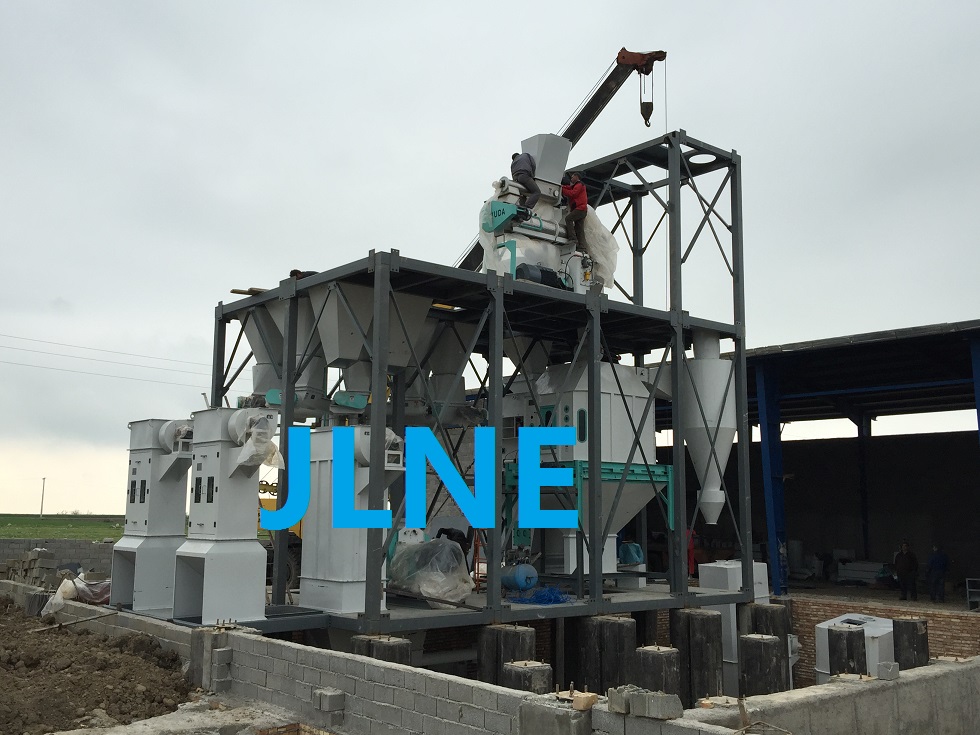
How to reduce the production cost of feed factory II
The feed factory also needs to regularly check whether the steam pipeline leaks, whether the steam separator is working properly, whether the burner is performing the maximum efficiency, etc. Special attention should be paid to the quality of coal. The poor quality of coal causes the steam pressure before decompression to not reach 0.6-0.8 MPa, and it is difficult to provide dry saturated steam for the pelletizer, which affects the pelleting efficiency and pellet quality, and also leads to feed The tempering water is low, which increases the loss of raw materials. Regularly check the insulation of steam pipes to minimize heat loss and coal consumption. Feed mills should arrange production reasonably to avoid poor production connection. For example, when the steam reaches the use pressure, the steam-using equipment is not ready; or the steam-using equipment is ready, and the steam fails to meet the requirements for a long time, resulting in a waste of steam and a reduction in production efficiency. In the production arrangement of pellets, it is best to achieve continuous production to avoid waste caused by exhaust and draining condensate every time the pellet machine is turned on.
3. reasonable control of parts inventory
The vulnerable parts directly used in the production of feed mills include ring dies, press rollers, hammers, screens, hoppers, belts, bearings, motors, sewing machine parts, gears, sprockets, etc.
The factory manager should analyze the monthly maintenance expenses, strengthen the management of the whole process of maintenance parts procurement, and focus on:
1. Establish a reasonable inventory of accessories to reduce the backlog of funds.
2. Establish a record of parts requisition and consumption.
3. Determine the standard range of normal consumption.
4. Regularly evaluate and assess the quality of accessories provided by suppliers. For example, although the price of stainless steel ring dies with the same compression ratio and the same diameter is much higher than that of alloy steel ring dies, the quality assurance time, service life and wear resistance of stainless steel ring dies are unmatched by alloy steel ring dies. , The use cost is lower than the alloy steel ring die. Even if they are all stainless steel ring dies, the quality varies from manufacturer to manufacturer. Calculated on the basis of 420 machine stainless steel laminating film at USD1250/piece, if each ring die can produce 16,000 tons, the laminating cost is USD0.084/t; if each laminating film can only produce 8,000 tons, the laminating cost is USD0.17. In addition, it should be noted that frequent film changes will have a serious impact on the time limit and output of the film.
4. Reasonably control maintenance costs
The reasons for the high maintenance costs: First, they do not pay attention to the restorative maintenance of equipment and tools, and buy new ones at every turn; Second, the maintenance level is low, resulting in high costs for repeated maintenance, especially the number of medium and large repairs; The loss of repair parts is large, including poor quality of procurement, shoddy parts, lost, stolen, and damaged parts; fourth is the lack of monitoring of the procurement of parts in various feed factories, resulting in high procurement costs; fifth is the high cost of maintenance auxiliary materials (steel, steel, etc.) Welding rods, oxygen, acetylene, grinding wheels, cutting saw blades, etc.); Sixth, the preventive maintenance of the equipment is insufficient, resulting in high maintenance costs after the equipment is completely paralyzed. The failure of equipment should be prevention first and repair second. Through sound routine maintenance, the failure rate can be greatly reduced and the normal production can be ensured.
5. Speed up the upgrading of process equipment
With the development of the feed industry, in recent years, the progress of my country’s feed processing equipment upgrades has been accelerated, and the degree of specialization of feed processing equipment has continued to increase. Feed equipment manufacturers have introduced new energy-saving and high-efficiency specialized processing equipment to feed factories. It has obvious effects to improve production efficiency, reduce production costs, realize the stability of product processing quality, and increase the added value of products. Feed mills should actively adopt equipment that can save energy and reduce consumption and have low operating costs, Especially for those production lines and equipment that have been in operation for many years, with high energy consumption, low production efficiency, and poor safety performance, technical transformation should be increased to reduce the overall cost of the production process.
When upgrading equipment, try to fully implement automated operations as much as possible. For example, compared with a production line with 5t/hour manual feeding, automatic batching and manual finished product stacking, and a 40t/hour automatic feeding, automatic batching and mechanized stacking production line, the latter requires fewer production workers, but The production capacity varies greatly. Under the premise of producing the same amount of feed, the labor cost of the latter is much lower than that of the former. The reason for the high labor cost is that the production process is limited, the automation and mechanization of the production line are low, and more labor has to be used, and the labor intensity of the workers is high, the loading and unloading process costs are high, and the per capita production efficiency is low. Therefore, the entire process from the raw material entering the workshop to the finished product stacking is fully automated, and the scope of manual operations is reduced as much as possible, which can not only save labor costs, but also save time, space, safety and other production costs. More importantly, as long as the equipment is normal, the production volume and quality are stable, while manual operation is affected by human ability and work enthusiasm, and the production volume and quality are unstable. If conditions permit, it is possible to explore and promote automatic bulk feeding and bulk finished product transportation modes to save labor costs and packaging material costs for feeding, packaging and unloading.
